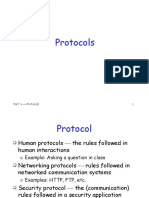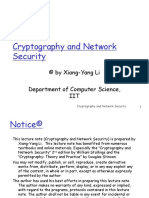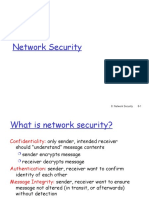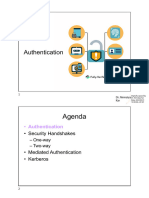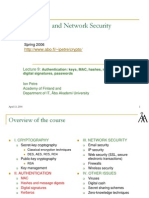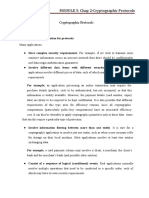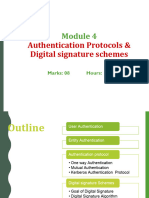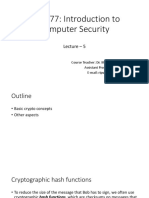0% found this document useful (0 votes)
75 views41 pagesSecurity Protocol Challenges
The document discusses various types of protocols including human protocols, networking protocols, and security protocols. It then examines authentication protocols, noting that while authentication on a standalone computer is simple, authentication over a network presents challenges due to possible attacks. The document explores several approaches to authentication protocols, including simple password authentication, challenge-response techniques using nonces, and approaches using symmetric or public key cryptography. It identifies issues like replay attacks and discusses ways to achieve properties like mutual authentication and establishment of a secure session key.
Uploaded by
Kavya BalajiCopyright
© © All Rights Reserved
We take content rights seriously. If you suspect this is your content, claim it here.
Available Formats
Download as PDF, TXT or read online on Scribd
0% found this document useful (0 votes)
75 views41 pagesSecurity Protocol Challenges
The document discusses various types of protocols including human protocols, networking protocols, and security protocols. It then examines authentication protocols, noting that while authentication on a standalone computer is simple, authentication over a network presents challenges due to possible attacks. The document explores several approaches to authentication protocols, including simple password authentication, challenge-response techniques using nonces, and approaches using symmetric or public key cryptography. It identifies issues like replay attacks and discusses ways to achieve properties like mutual authentication and establishment of a secure session key.
Uploaded by
Kavya BalajiCopyright
© © All Rights Reserved
We take content rights seriously. If you suspect this is your content, claim it here.
Available Formats
Download as PDF, TXT or read online on Scribd
/ 41




